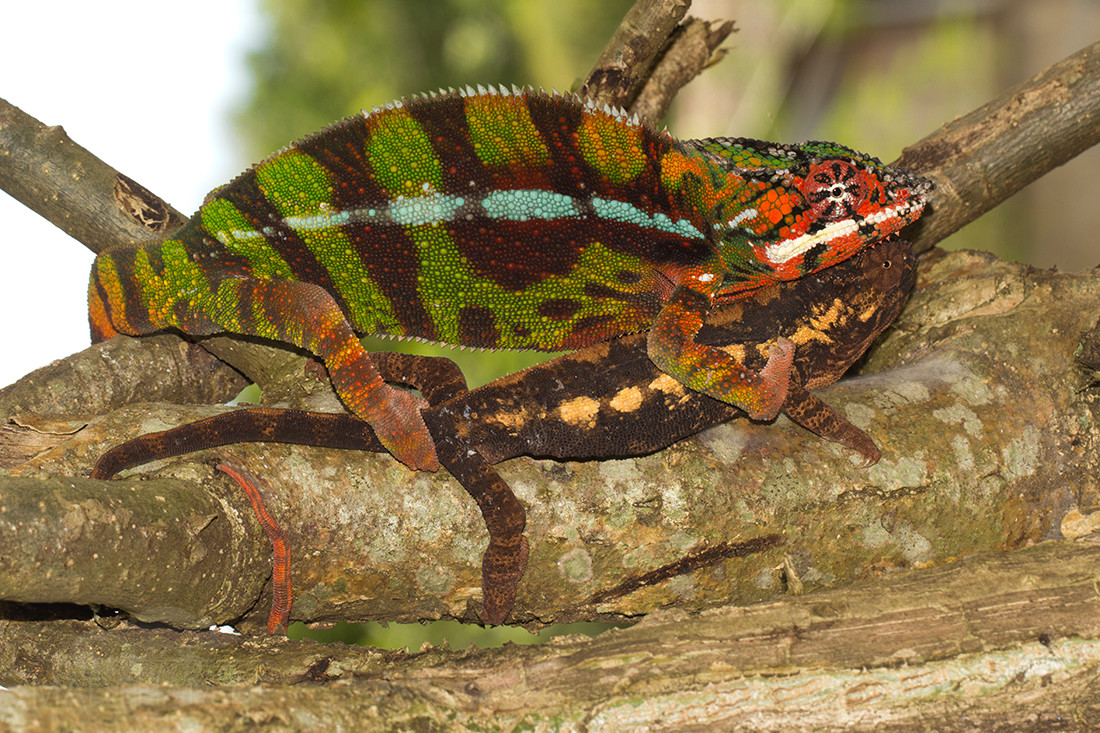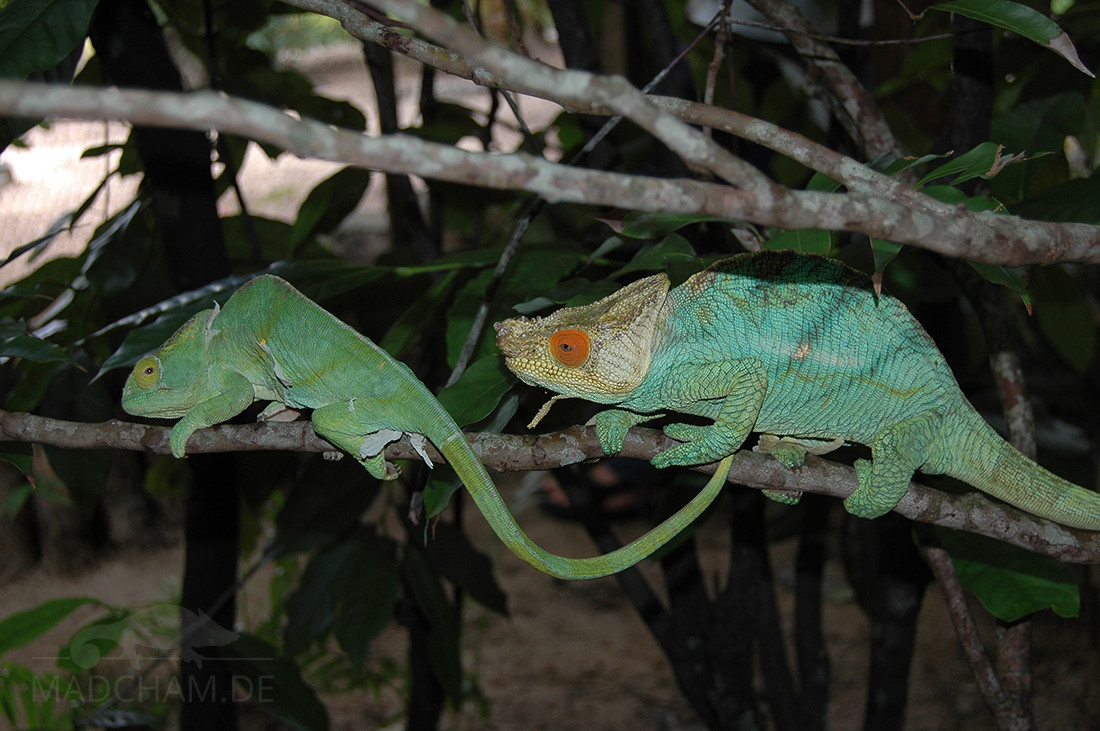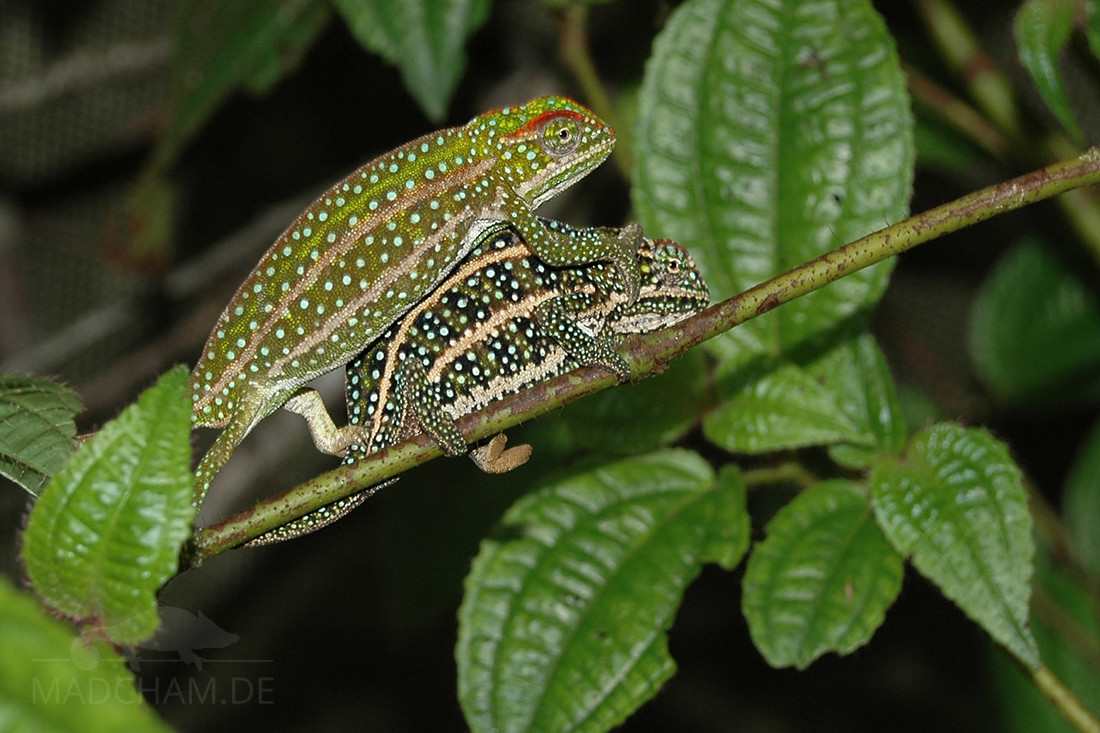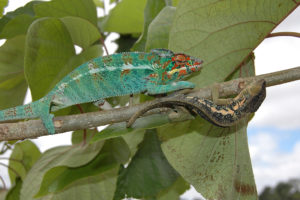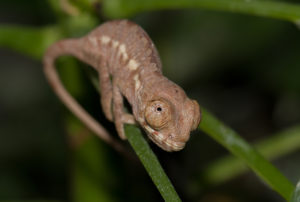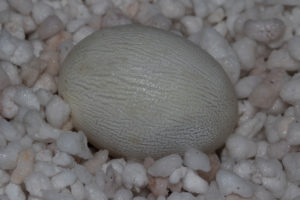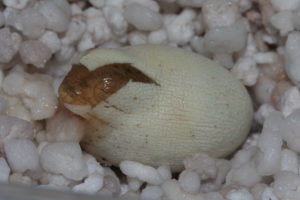Keepers who have been in the hobby for years usually like to have offspring from the chameleon species they’ve been keeping. Breeding does not only ensure the existence of a species in captivity but also satisfies the demand for chameleons as pets so fewer wild-caught chameleons are sold.
How old should a chameleon be for first mating?
Generally, sexual maturity in chameleons is determined by weight rather than age. A quickly grown chameleon female might be much earlier receptive than a slowly growing sibling. So there is no “optimum age” for the first mating. But we advise mating only females that have reached the average adult size of their species. Too early mated, too small females tend to get problems when it is time to lay eggs and face shortened life expectancy. Only choose chameleons for a mating that seem to be healthy. And when you like to keep your chameleons for years, also ensure to mate the females not too often per year.
When is the best time for mating?
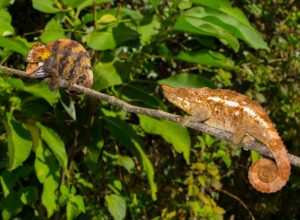
This female Calumma crypticum is already pregnant. She hisses with a wide-open mouth to keep the male away.
Commonly kept species such as panther chameleons or carpet chameleons usually mate all over the year. In other species, readiness may depend on higher temperatures and heavy rainfall as is the case in Madagascar during the rainy season. The rainy season marks the beginning of the mating season for all chameleons on the red island. So if you got chameleons who do not show any intention to mate, you will be sometimes able to trigger this behavior by a cool period followed by a time with much watering and higher temperatures. The real sun also helps to fuel libido in many chameleons unwilling to mate indoors.
The mating
In the best case put the female into the cage of the male for mating. An interested male begins to bob his head in the direction of the desired female. He shows his prettiest colors and slowly gets closer. Most females show already certain colorations when receptive. Additionally, claws often begin to grow on females that are ready to mate. A non-receptive female will threaten, hiss, swing back and forth on the branch, and show a dark stress coloration. A receptive female may run away first but lets the male catch her up finally without resistance.
Normally the male climbs on the back of the female from behind and pushes his cloaca under the cloaca of the female. In doing so he pulls out one of his hemipenes and introduces it into the cloaca of the female. Copulation takes 2 to 45 minutes, sometimes even longer. Unexperienced males may need some trials before they find “the right direction” and may finish copulation. Males that have been mating several times before usually mate quicker and more “targeted”.
Mating in captivity should only be done under the keeper’s surveillance. Thus you can separate chameleons when the female is not receptive or the male too intrusive. When the mating is done or obviously failed, bring the female back to her own cage. Females that have been mated successfully usually show soon that they do not wish more approaches by the male: They turn dark, hiss, and threaten into the direction of the partner.
It is possible to mate different species?
It is possible to mate closely related species. Closely related usually means both partners need to belong to the same genus: Two Furcifer species might be able to mate, but a Calumma species cannot mate a Furcifer species. Partially, such hybridizations even result in viable offspring. Artificial matings in captivity are known from Furcifer pardalis with Furcifer oustaleti. We explicitly oppose such experiments in captive-kept chameleons.

